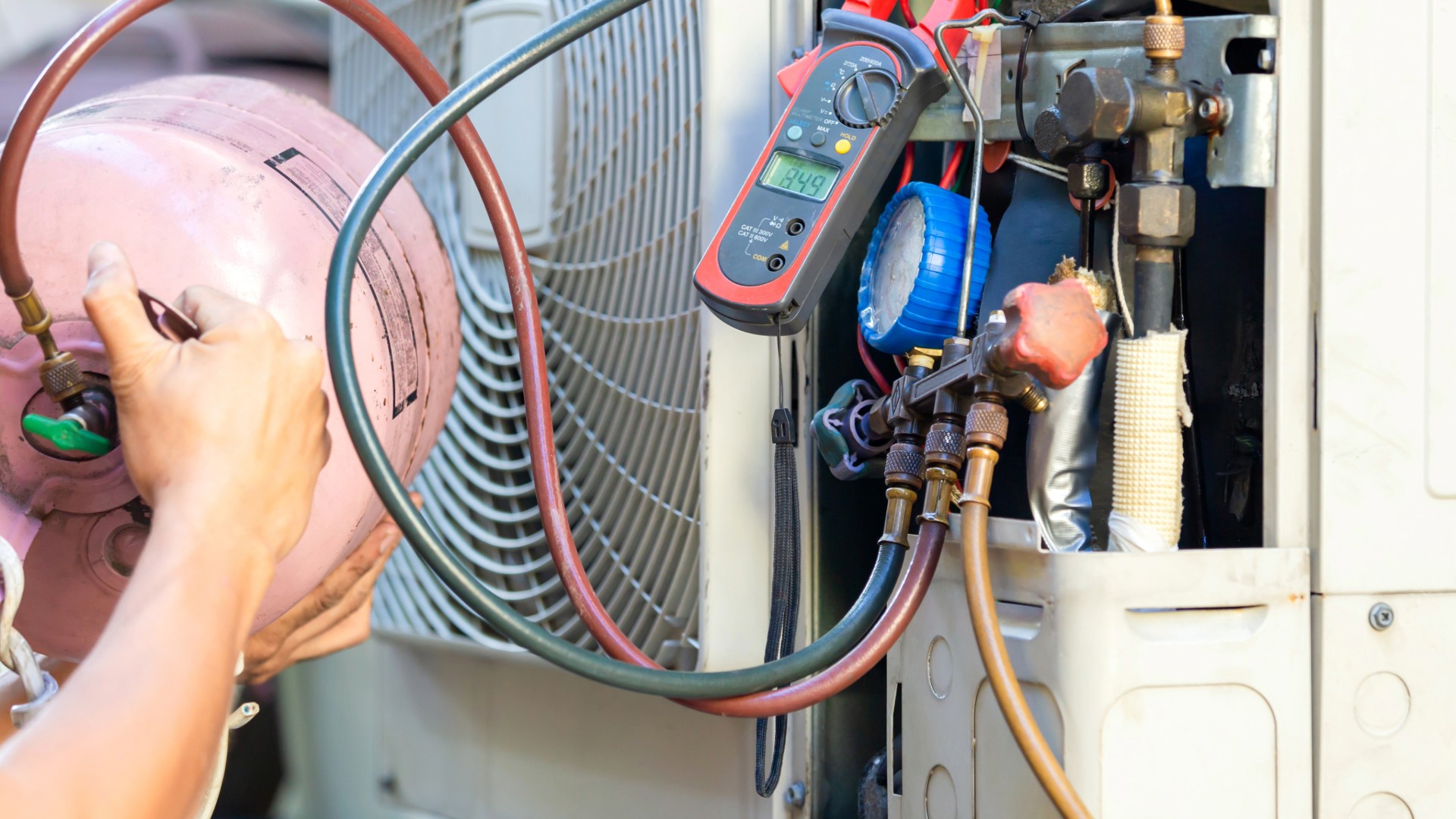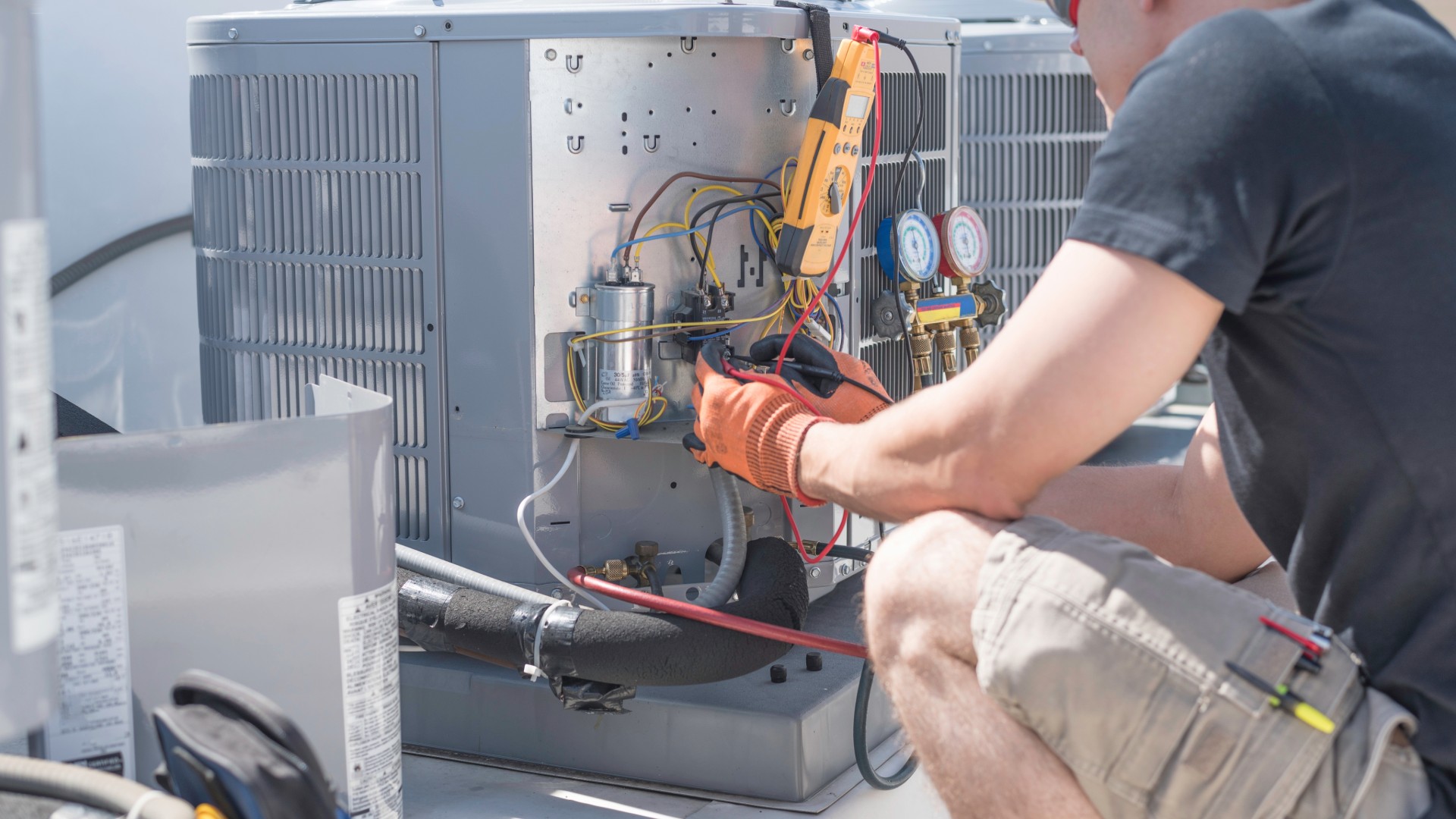The demand for skilled HVAC professionals has grown significantly across various industries, including mining, oil and gas, military, municipal, and other heavy industrial sectors. Companies in these fields are increasingly relying on well-trained technicians to ensure the reliability of their heating, ventilation, and air conditioning systems, which are critical for operational efficiency, worker safety, and regulatory compliance. For decision-makers hiring for HVAC enterprise jobs, identifying candidates with verified credentials, proven experience, and technical certifications has become a top priority.
Certifications play a pivotal role in distinguishing qualified candidates in the competitive HVAC enterprise jobs market. They not only demonstrate technical proficiency but also ensure compliance with federal and state regulations, particularly when handling refrigerants or working in environments with strict safety standards. For individuals pursuing HVAC apprentice work, earning recognized certifications can accelerate career progression, improve employability, and enhance readiness for advanced HVAC jobs. Additionally, credentials provide measurable value to employers by reducing downtime, enhancing operational efficiency, and ensuring adherence to safety protocols.
This blog will explore the most important credentials for aspiring technicians, focusing on legally required, safety-focused, and career-boosting certifications that give candidates a competitive edge in securing HVAC enterprise jobs across high-demand sectors. By understanding these credentials, both employers and apprentices can make informed decisions that maximize performance, efficiency, long-term ROI, and workforce reliability. For those seeking to excel in HVAC apprentice work or move into specialized HVAC jobs, this guide highlights the certifications that offer the strongest career advantages in industrial, municipal, and military environments.
Why Certifications Matter in HVAC Careers
In today’s industrial landscape, certifications are more than just formal credentials; they serve as a measure of credibility, technical competence, and adherence to safety standards. For employers hiring for HVAC enterprise jobs, certified technicians provide assurance that systems will be installed, maintained, and repaired in accordance with regulatory requirements, thereby reducing risk, enhancing operational efficiency, and improving overall workforce performance. Certifications also deliver measurable ROI by minimizing downtime, preventing costly errors, and promoting safe work practices that protect both employees and assets.
For those pursuing HVAC apprentice work, earning recognized certifications accelerates skill development, builds confidence, and opens doors to advanced opportunities. Certified apprentices are better equipped to handle complex tasks, follow safety protocols, and contribute to high-performing teams. They gain practical expertise that translates into improved troubleshooting, system optimization, and project execution, qualities highly valued in HVAC jobs across both industrial and municipal sectors.
Across various sectors, including mining, oil and gas, military, municipal services, and other heavy industries, certifications have a direct impact on employability in HVAC jobs. Employers prioritize candidates with verifiable credentials, proven technical skills, hands-on experience, and a demonstrated ability to comply with safety and environmental regulations. Investing in certifications enables apprentices to gain a competitive edge, positioning them for leadership roles, advanced HVAC jobs, and specialized positions in high-demand HVAC enterprises.
Beyond individual career benefits, certifications strengthen organizational capability. A certified workforce improves reliability, operational consistency, and overall industry credibility. Employers gain measurable advantages in performance metrics, project delivery timelines, and workplace safety compliance. In high-stakes environments, such as heavy industry, military installations, and large-scale municipal projects, these credentials are essential for ensuring both technical excellence and regulatory adherence, making certified technicians indispensable for maintaining the integrity of HVAC enterprise jobs and complex HVAC operations.
By strategically pursuing certifications, aspiring technicians and apprentices not only enhance their employability in HVAC jobs but also contribute to a safer, more efficient, and highly competent workforce capable of meeting the rigorous demands of industrial, municipal, and military sectors. The combination of formal credentials, hands-on experience, and safety-focused training provides a clear pathway to success in both HVAC apprentice work and advanced HVAC enterprise jobs.
Most Important HVAC Certification: EPA Section 608
The EPA Section 608 Certification is widely regarded as the most critical credential for anyone pursuing HVAC enterprise jobs in the United States. Mandated under the Clean Air Act, this certification is legally required for any technician who handles refrigerants, making it an essential baseline for compliance, environmental responsibility, and professional credibility. For individuals starting their HVAC apprenticeship, obtaining EPA 608 certification early in their career ensures they meet federal requirements while positioning themselves as qualified candidates for a broad range of industrial roles.
EPA Section 608 is divided into four distinct types, each aligned with specific HVAC systems:
- Type I: Covers small appliances, including window units and compact systems.
- Type II: Applies to high-pressure systems commonly found in commercial and industrial facilities.
- Type III: Focuses on low-pressure systems such as chillers used in large-scale operations.
- Universal: A comprehensive certification that allows technicians to work across all system types, offering the greatest flexibility and employability.
Possessing EPA 608 Certification demonstrates not only legal compliance but also a technician’s ability to manage refrigerants safely and efficiently. This reduces the risk of accidents, environmental violations, and costly downtime, which is particularly valuable for employers hiring for HVAC enterprise jobs in heavy industries such as mining, oil and gas, and municipal operations. Certified technicians can be trusted to follow best practices on-site, improving overall workforce reliability and performance.
Beyond the EPA certification, complementary credentials like NATE (North American Technician Excellence) and HVAC Excellence Certification validate advanced technical knowledge and hands-on skills. While EPA 608 serves as a legal baseline, these additional certifications indicate expertise in system diagnostics, installation, and maintenance. Candidates holding multiple credentials are often prioritized for higher-level HVAC jobs, accelerated apprenticeships, and leadership tracks within industrial facilities.
From a real-world perspective, EPA 608 Certification has a direct impact on hiring decisions. Employers in sectors such as military, municipal, and industrial contracting prefer candidates who can demonstrate immediate compliance and technical readiness. For apprentices, holding this certification signals professionalism, reduces on-the-job training time, and significantly increases the likelihood of securing HVAC enterprise jobs with competitive compensation and career growth potential.
Best OSHA Certification for HVAC
For professionals pursuing HVAC enterprise jobs, safety is a top priority, and OSHA certifications provide essential training to meet industry standards. The OSHA 10-Hour and OSHA 30-Hour Construction Training programs are widely recognized as the most valuable for HVAC apprentices and technicians. These certifications equip candidates with the practical knowledge to identify hazards, follow safety protocols, and maintain compliance with federal workplace regulations, making them highly sought after by employers across the mining, oil and gas, military, and municipal sectors.
Key areas covered in OSHA training include:
- Electrical safety: Understanding proper procedures to prevent shocks, electrocution, and equipment damage.
- Lockout/tagout protocols: Ensuring safe isolation of electrical and mechanical energy during maintenance.
- Confined space entry: Techniques for safely working in tight or enclosed spaces common in HVAC systems.
- Hazardous materials handling: Best practices for safely managing chemicals, refrigerants, and other materials.
By completing OSHA 10-Hour or 30-Hour courses, apprentices gain the knowledge necessary to protect themselves and others on the job site. Employers hiring for HVAC jobs benefit from a workforce trained to minimize accidents, reduce downtime, and comply with regulatory requirements, creating measurable ROI in operational safety.
A real-world example highlights the value of OSHA-certified apprentices: in a large municipal HVAC retrofit project, teams with OSHA-trained technicians reported a 35% reduction in on-site incidents compared to non-certified teams. This improvement not only ensured worker safety but also increased project efficiency and reduced liability, demonstrating the tangible benefits of OSHA training for both apprentices and employers seeking HVAC enterprise jobs.
Completing OSHA certification alongside technical credentials, such as the EPA Section 608, further positions candidates for success in HVAC apprentice work and prepares them for higher-level responsibilities in industrial, military, and municipal projects. These certifications signal professionalism, technical readiness, and a strong commitment to safety, qualities that hiring managers prioritize in competitive HVAC job markets.
Best HVAC License to Have
For candidates targeting HVAC enterprise jobs, obtaining the right license is essential for career advancement and legal compliance. State-issued HVAC contractor licenses vary widely, reflecting differences in local regulations, exam requirements, and experience thresholds. While the specifics differ from state to state, a common recommendation for aspiring technicians is to pair a Universal EPA 608 Certification with a state-issued HVAC/R contractor license. This combination ensures both federal compliance and local licensing eligibility, maximizing opportunities in industrial, municipal, and military projects.
Advanced credentials such as NATE (North American Technician Excellence) and HVAC Excellence Certification complement licensing by validating specialized knowledge and practical skills. These certifications demonstrate mastery in system installation, maintenance, and troubleshooting, giving candidates a competitive edge in securing higher-level HVAC jobs and leadership roles within organizations.
State requirements can differ significantly. For example, Florida and Georgia have specific Class A and Class B HVAC contractor licenses that require candidates to pass rigorous exams and demonstrate hands-on experience. Understanding local licensing rules is crucial for apprentices and technicians pursuing HVAC apprenticeship work, as it ensures they meet both legal and industry standards before taking on independent projects.
From a return-on-investment perspective, holding the right combination of licenses and certifications accelerates career progression. Licensed and credentialed technicians often achieve faster promotions, command higher salaries, and become eligible for more complex contracts in industrial and municipal sectors. Employers benefit by hiring fully qualified professionals, reducing training costs, minimizing compliance risks, and improving workforce efficiency, critical factors in high-stakes HVAC enterprise jobs environments.
Fastest Way to Become an HVAC Technician
For individuals aiming to secure HVAC enterprise jobs quickly, following a structured and strategic pathway is essential. The fastest route combines formal education, recognized certifications, and hands-on experience to prepare candidates for high-demand roles in industrial, municipal, military, and heavy-industry sectors. Typically, the recommended steps include:
- Complete a high school diploma or GED – This foundational requirement is necessary for enrollment in accredited training programs. It ensures readiness for technical coursework, positioning candidates for early entry into HVAC apprentice work.
- Enroll in an accredited HVAC training program – Trade schools, community colleges, and online programs provide comprehensive instruction in system design, installation, troubleshooting, and maintenance. Many programs can be completed in six months to two years, allowing for rapid entry into the workforce and opening up opportunities for advanced HVAC jobs.
- Obtain EPA 608 Certification – Often integrated into training programs, this credential is legally required for handling refrigerants and demonstrates technical competence. EPA certification, combined with additional credentials such as NATE or HVAC Excellence, further strengthens eligibility for competitive HVAC enterprise jobs.
- Start an apprenticeship or entry-level technician role – Gaining practical, hands-on experience is critical. Apprenticeships accelerate learning, allowing candidates to apply theoretical knowledge in real-world settings, develop problem-solving skills, and prepare for more complex HVAC jobs.
Accelerated online programs, such as SkillCat, offer self-paced courses that significantly shorten certification timelines. Candidates can earn EPA 608 and other essential credentials quickly, making them immediately eligible for apprenticeships or entry-level positions. On average, motivated students can complete training, certification, and initial hands-on experience in under two years, positioning themselves for HVAC enterprise jobs sooner than traditional pathways.
Practical, on-the-job experience is vital for performance readiness. Employers hiring for HVAC jobs in the mining, oil and gas, municipal, military, and industrial sectors value technicians who can navigate complex systems safely, efficiently, and independently from the start. By combining structured education, recognized certifications, and real-world experience, aspiring technicians maximize their employability, career growth, and contribution to workplace productivity in HVAC apprentice work and other advanced roles.
Additional Resources and References
For individuals pursuing HVAC enterprise jobs and organizations seeking to hire highly skilled technicians, consulting authoritative sources can provide invaluable guidance on certifications, licensing, and career advancement. Reliable resources include government and industry organizations, trade associations, accredited training programs, and professional development guides that help ensure workforce readiness and compliance.
Key references and resources include:
- EPA Section 608 guidelines: Official documentation for refrigerant handling, legal compliance, and best practices under the Clean Air Act, crucial for anyone seeking HVAC apprentice work or advanced HVAC jobs.
- OSHA training materials: Comprehensive guidance on workplace safety standards, including electrical safety, lockout/tagout procedures, confined space entry, and safe handling of hazardous materials, essential for technicians in industrial and municipal projects.
- State HVAC licensing boards: Detailed requirements, exams, and experience criteria for contractor licenses vary by state, and staying informed ensures candidates meet legal standards for HVAC enterprise jobs.
- Accredited trade school programs: Many programs provide structured curricula, certification pathways, and hands-on apprenticeship opportunities that accelerate learning and prepare candidates for high-demand HVAC jobs.
- Industry certification bodies, such as NATE (North American Technician Excellence) and HVAC Excellence, outline credentialing requirements, recommend skill development, and provide advanced training opportunities that enhance employability in competitive markets.
By leveraging these resources, decision-makers, including procurement heads, engineering managers, project contractors, and facility executives, can make informed hiring decisions, ensure workforce compliance, and maximize operational efficiency. Similarly, aspiring technicians and those pursuing HVAC apprentice work can strategically plan their career paths, enhancing skills, boosting employability in HVAC jobs, and positioning themselves for long-term success in HVAC enterprise jobs across industrial, municipal, and military sectors.
Career Advantages of HVAC Certifications
Earning the right certifications significantly enhances both employability and career progression for individuals pursuing HVAC enterprise jobs. Credentials such as the EPA Section 608 Certification, OSHA 10-Hour or 30-Hour Construction Training, state HVAC contractor licenses, and advanced certifications like NATE or HVAC Excellence not only ensure legal compliance and workplace safety but also demonstrate technical competence valued by employers in mining, oil and gas, military, and municipal sectors.
For those engaged in HVAC apprentice work, these certifications accelerate skill development, improve hands-on performance, and open doors to advanced HVAC jobs with competitive compensation. Certified apprentices are often able to take on more complex tasks earlier in their careers, reducing the learning curve and increasing their contribution to project outcomes. Employers benefit from hiring certified technicians who require less supervision, adhere to safety standards, and contribute to maintaining consistent operational efficiency.
Certifications also play a direct role in return on investment for both individuals and organizations. Technicians with recognized credentials typically command higher salaries and are eligible for faster promotions, while employers experience lower incident rates, fewer compliance violations, and reduced downtime. In industrial, municipal, and military projects, this combination of skilled personnel and proven safety standards translates to measurable performance gains, cost savings, and stronger project delivery.
Beyond immediate career and operational benefits, certifications support long-term growth and development. Professionals with multiple credentials, combining EPA, OSHA, and advanced technical certifications, position themselves for leadership roles, specialized projects, and contract opportunities that might otherwise be inaccessible. For decision-makers overseeing workforce planning, investing in certified apprentices ensures a pipeline of capable, ready-to-deploy talent for high-demand HVAC enterprise jobs, strengthening the organization’s competitive advantage.
For individuals and employers looking to capitalize on these advantages, Steelpoint Talent provides access to certified HVAC apprentices, connecting skilled candidates with high-impact roles across diverse industrial sectors. By prioritizing certifications, both apprentices and employers gain tangible benefits in skill, safety, career growth, and operational efficiency, making certified professionals the preferred choice in competitive HVAC jobs markets.









